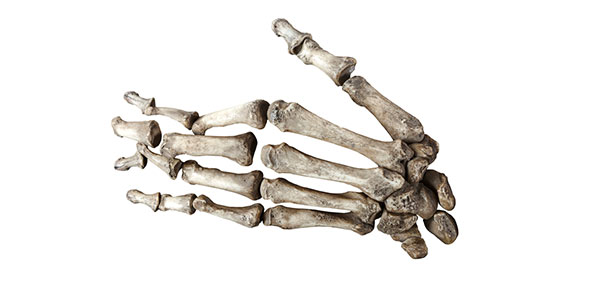Related Flashcards
Related Topics
Cards In This Set
| Front | Back |
|
How are joints classified?
|
The amount of movement permitted by a particular joint is the basis for the functional classification of joints.
|
|
A joint united by dense fibrocartilaginous tissue that usually permits a slight degree of movement is a __________________.
|
Symphysis
|
|
A fibrous joint that is a peg-in-socket is called a _________________ joint.
|
Gomphosis
|
|
In _________________ joints the bones are joined together by fibrous tissue and lack a joint cavity.
|
Fibrous
|
|
___________________ occur between bones of the skull and use very short connective tissue fibers to hold the bones together
|
Sutures
|
|
In ___________________, the bones are connected by a ligament, which is a cord or band of fibrous tissue
|
Syndesmoses
|
|
A _______________________ is a peg-in-socket fibrous joint.
|
Gomphosis
|
|
In _______________________ joints, bones are joined together by cartilage and they lack a joint cavity.
|
Cartilaginous joints
|
|
_____________________ involve a bar or plate of hyaline cartilage uniting the bones, such as the ________________________
|
Synchondroses, epiphyseal plate
|
|
In _____________________, such as the ________________________, the articular surfaces are covered with articular cartilage that is then fused to an intervening pad or plate of fibrocartilage.
|
Symphyses
|
|
In ____________________ joints, the articulating bones are separated by a fluid-containing joint cavity
|
Synovial
|
|
Five features that distinguish the general structure of a synovial joint
|
1. articular cartilage coveres the end of the articulating bones2. the joint (synovial) cavity is a space that is filled with synovial fluid.3. the two-layered articular capsule encloses the joint cavity.4. synovial fluid is a viscous, slippery fluid that fills all free space within the joint cavity.5. reinforcing ligaments cross synovial joints to strengthen the joint
|
|
______________________ classification is based on the amount of movement allowed at the joint.
|
Functional
|
|
__________________ are immovable joints
|
Synarthroses
|
|
_____________________ are slightly movable joints
|
Amphiarthroses
|






